Abstract
Several factors contributed to differences in intracellular composition between sugar-tolerant (osmophilic) and nontolerant species of yeast. One such factor was the difference in accumulation of those nonelectrolytes whose uptake was not dominated by vigorous metabolism. In such cases (lactose and glycerol), the sugar-tolerant species had a much lower capacity for the solute than did the nontolerant species. Sucrose uptake was consistently different between all sugar-tolerant strains on the one hand and all nontolerant strains on the other. The difference was attributable in part to metabolism of sucrose by the nontolerant yeasts. The major difference between the two types of yeast, however, was the presence of one or more polyhydric alcohols at high concentrations within each of the sugar-tolerant strains but none of the nontolerant strains. In most cases the major polyol was arabitol. The solute concentration (and, hence, water availability) of the growth medium affected both the amount of arabitol produced by Saccharomyces rouxii and the proportion retained by the yeast after brief washing with water at 0 C. When the yeast was suspended in a buffer at 30 C, the polyol leaked out at a slow, constant, reproducible rate. The polyene antibiotic amphotericin B caused rapid release of polyol by the yeast, the rate being proportional to amphotericin concentration. Contact of the yeast with glucose (1 mM) caused an extremely rapid ejection of polyol which lasted less than 40 s. Some implications of these results are discussed, as is the role of the polyol as a compatible solute in determining the water relations of the yeast.
Full text
PDF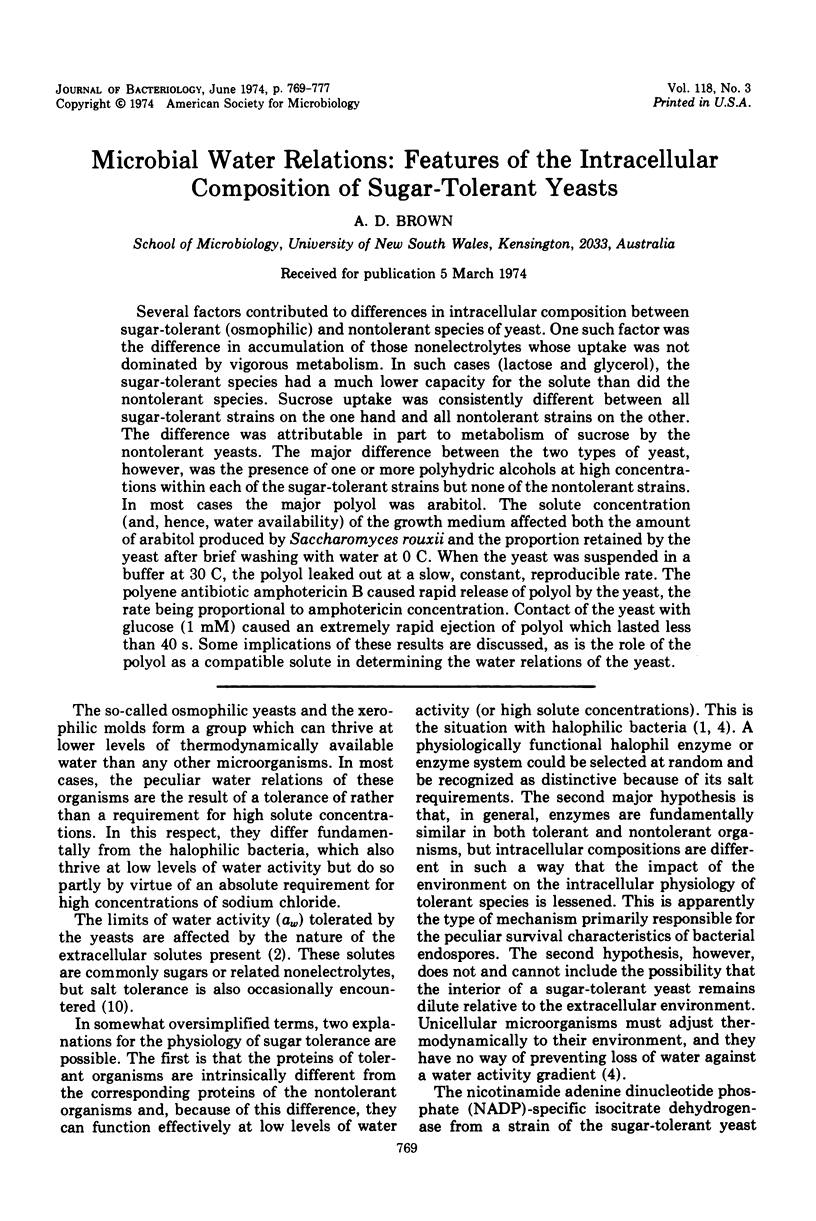
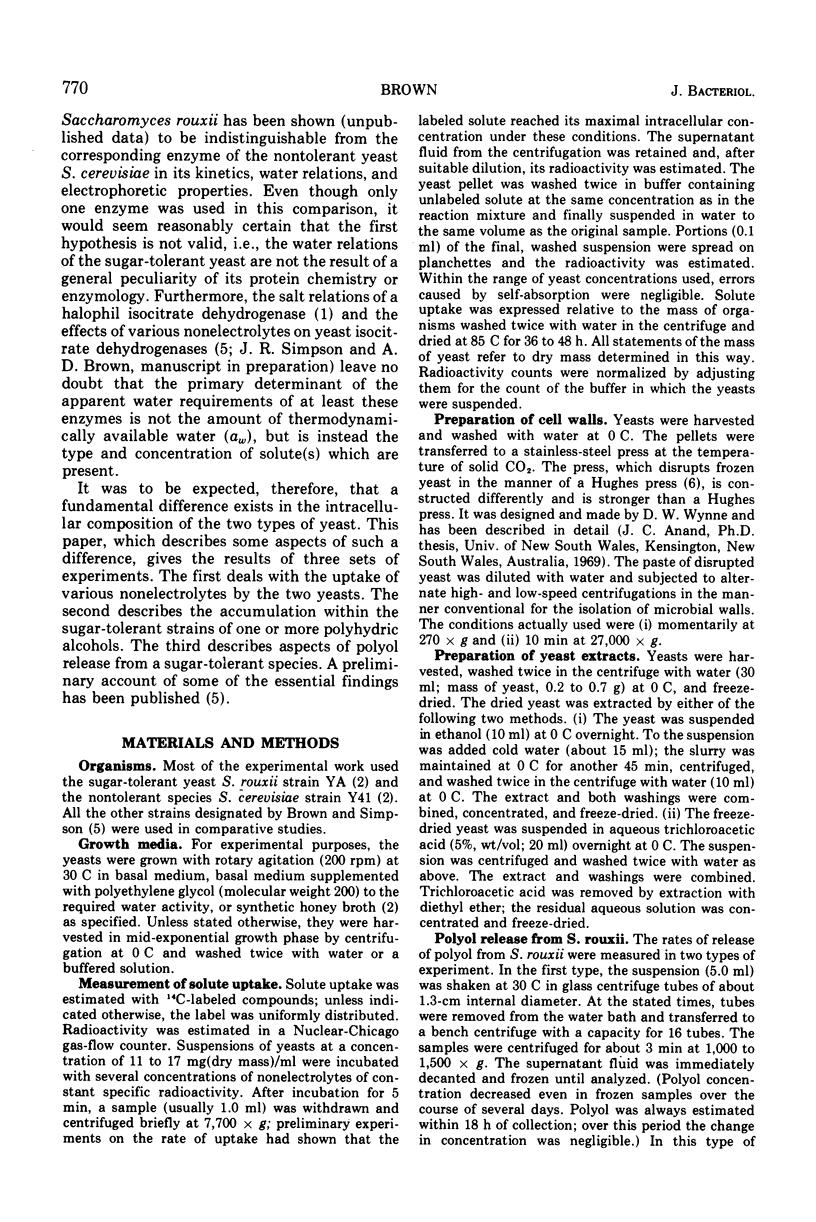
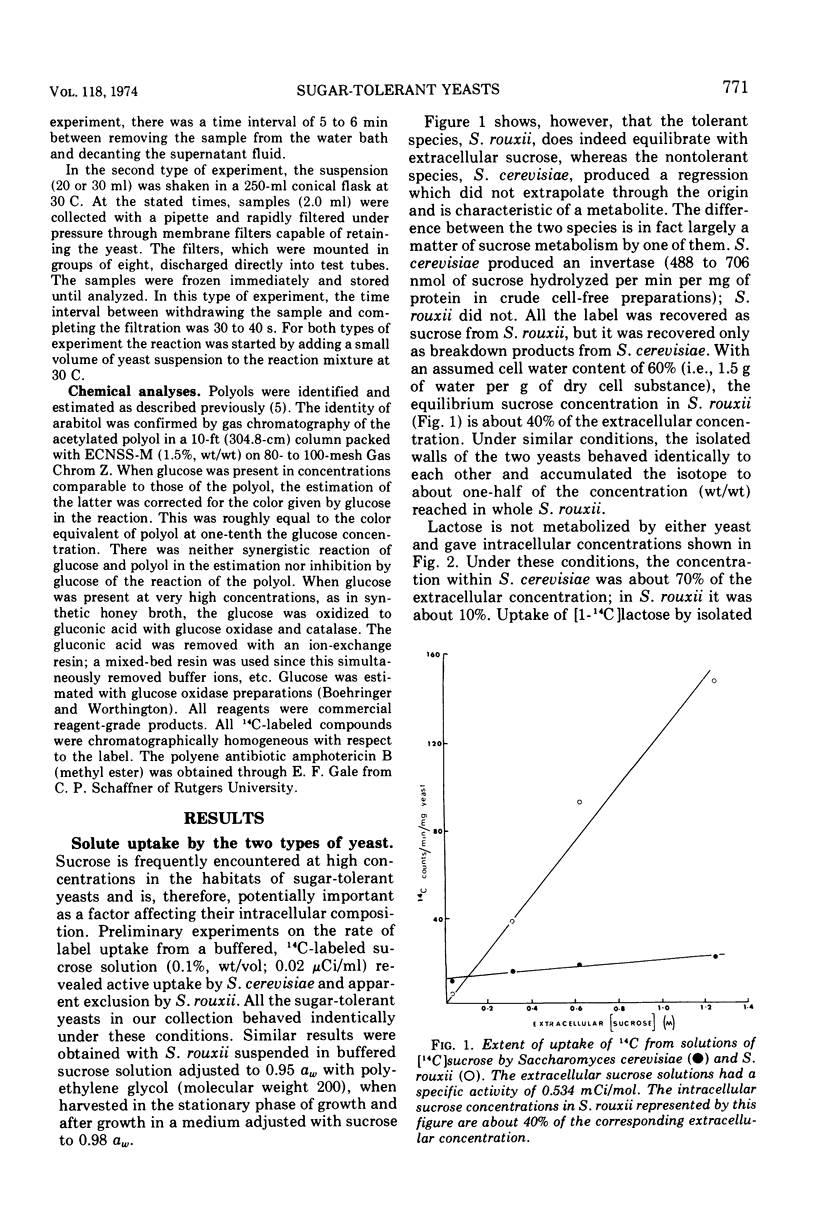
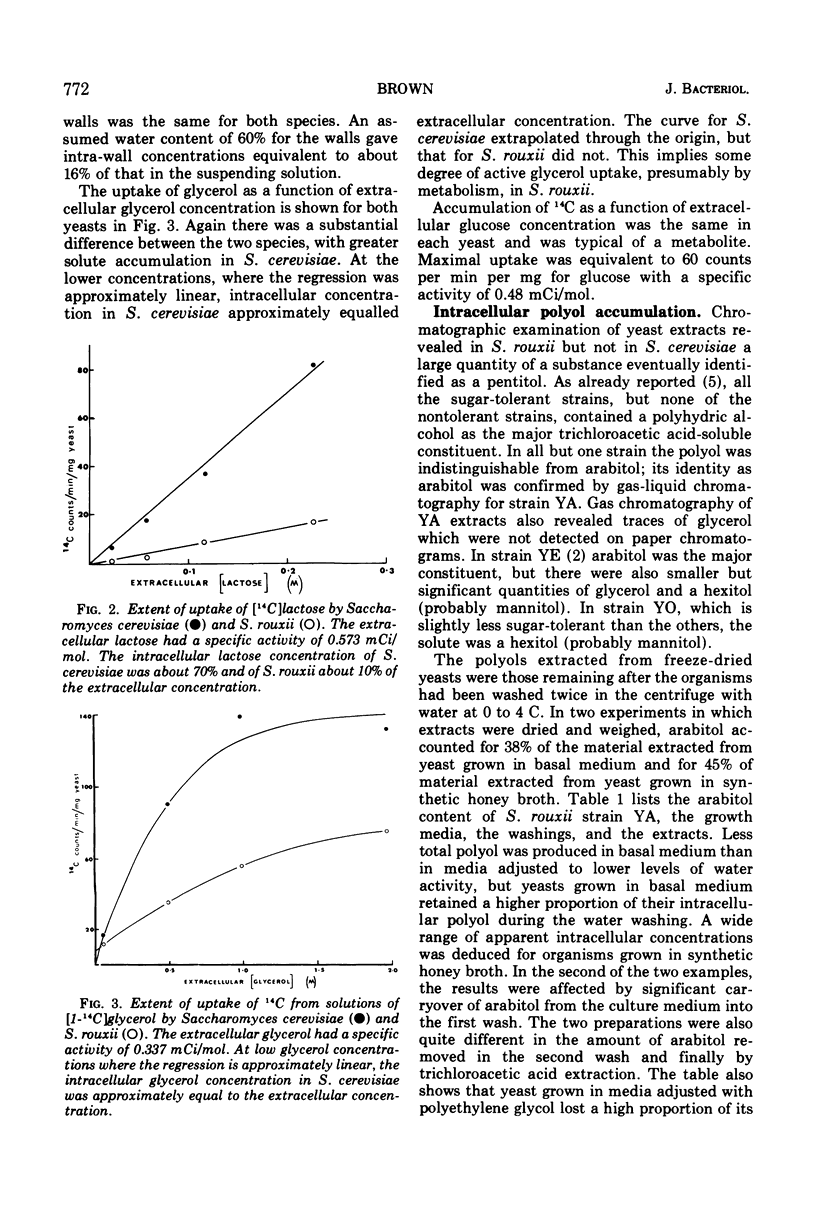
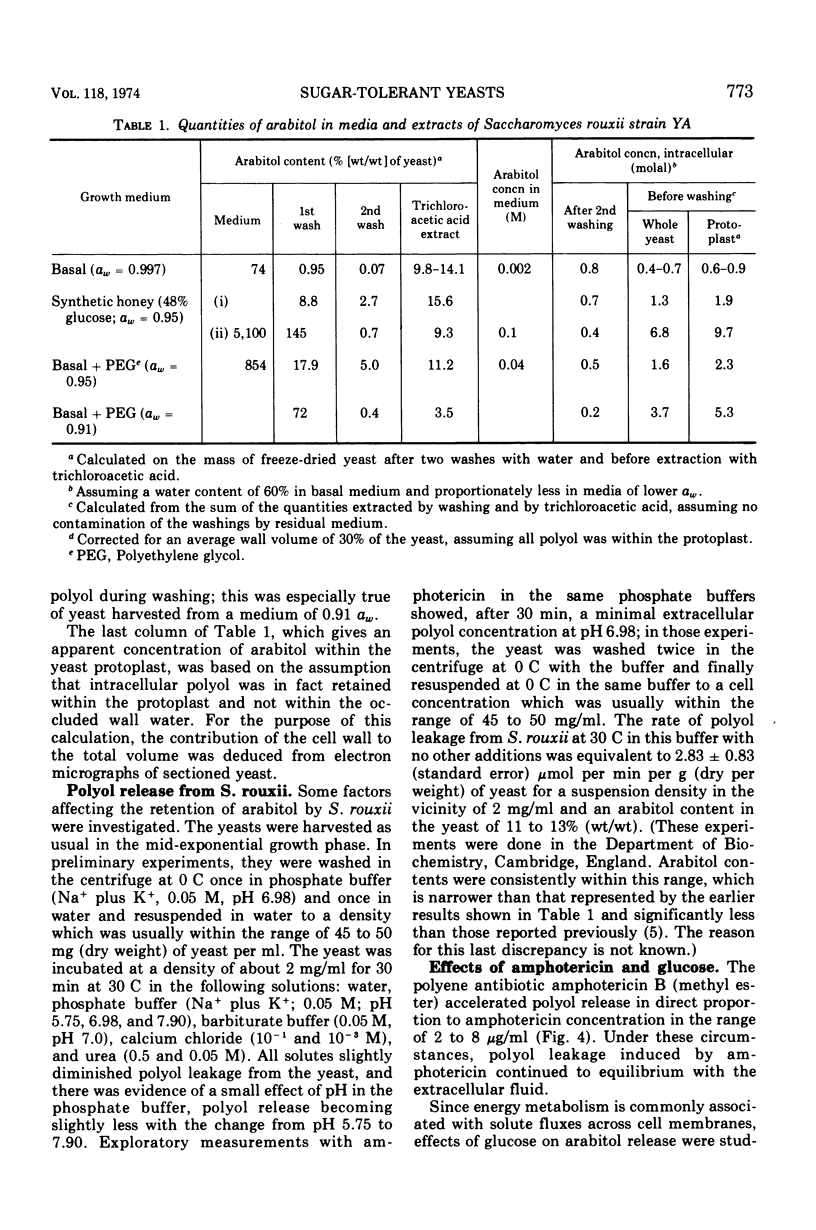
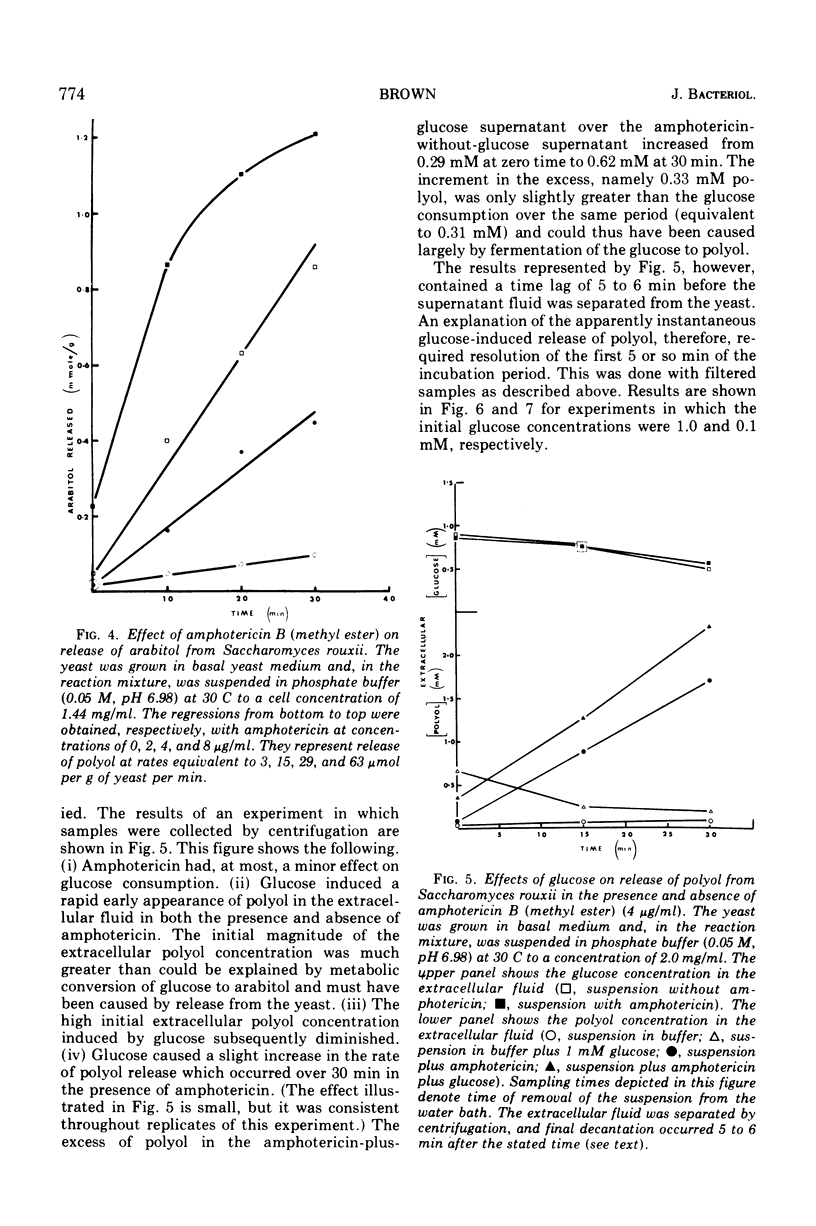
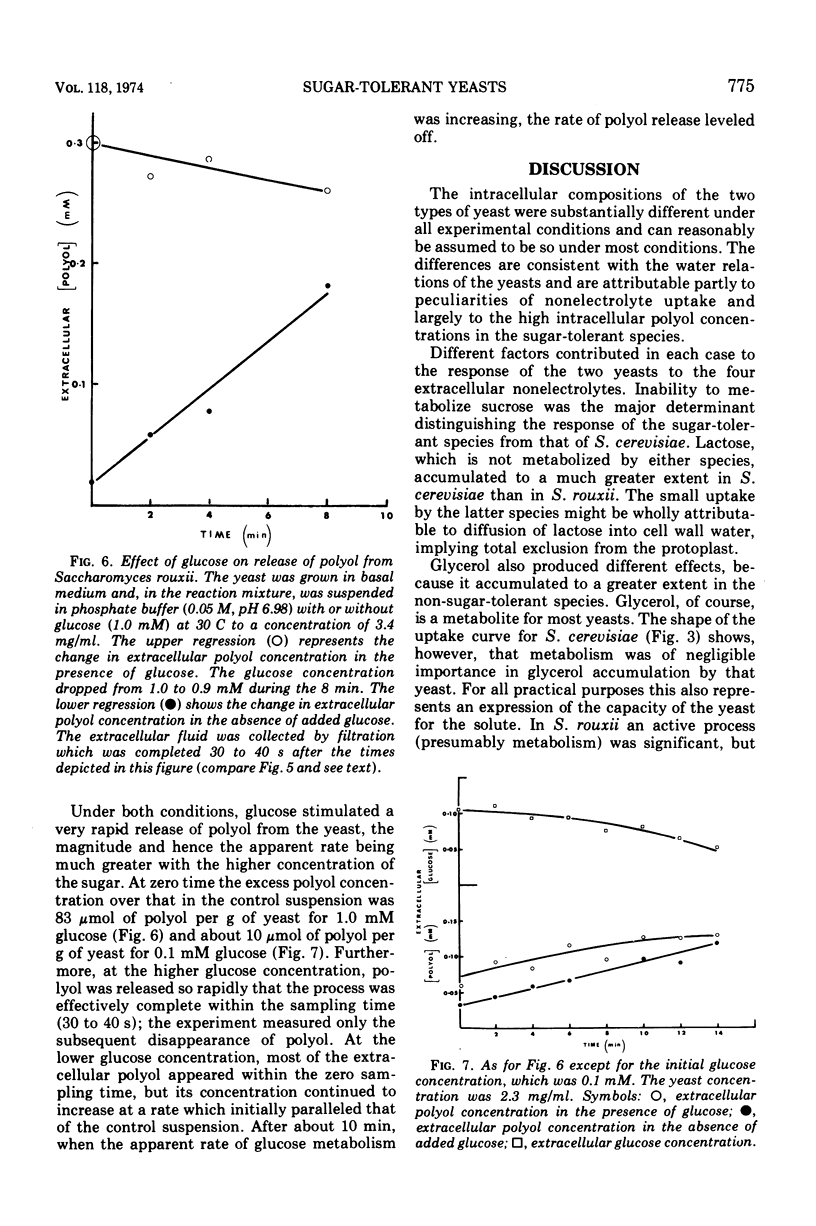
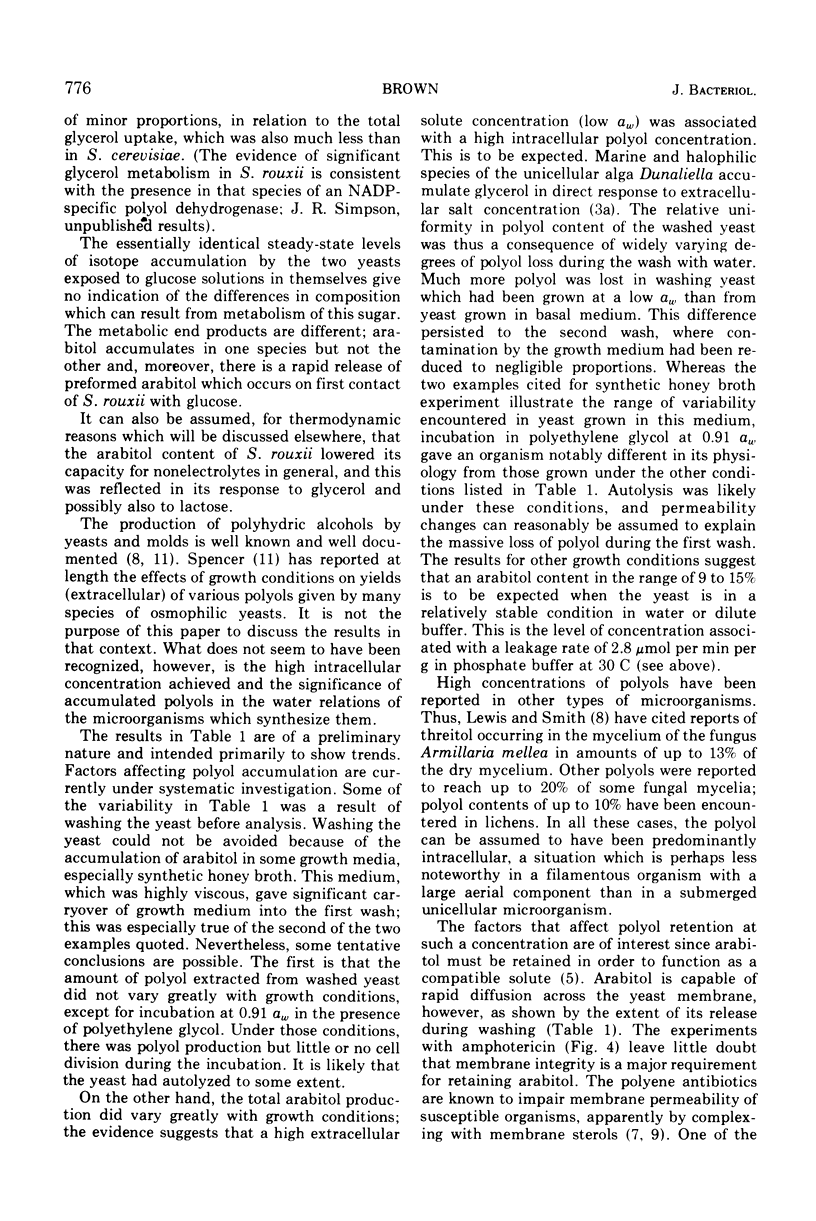
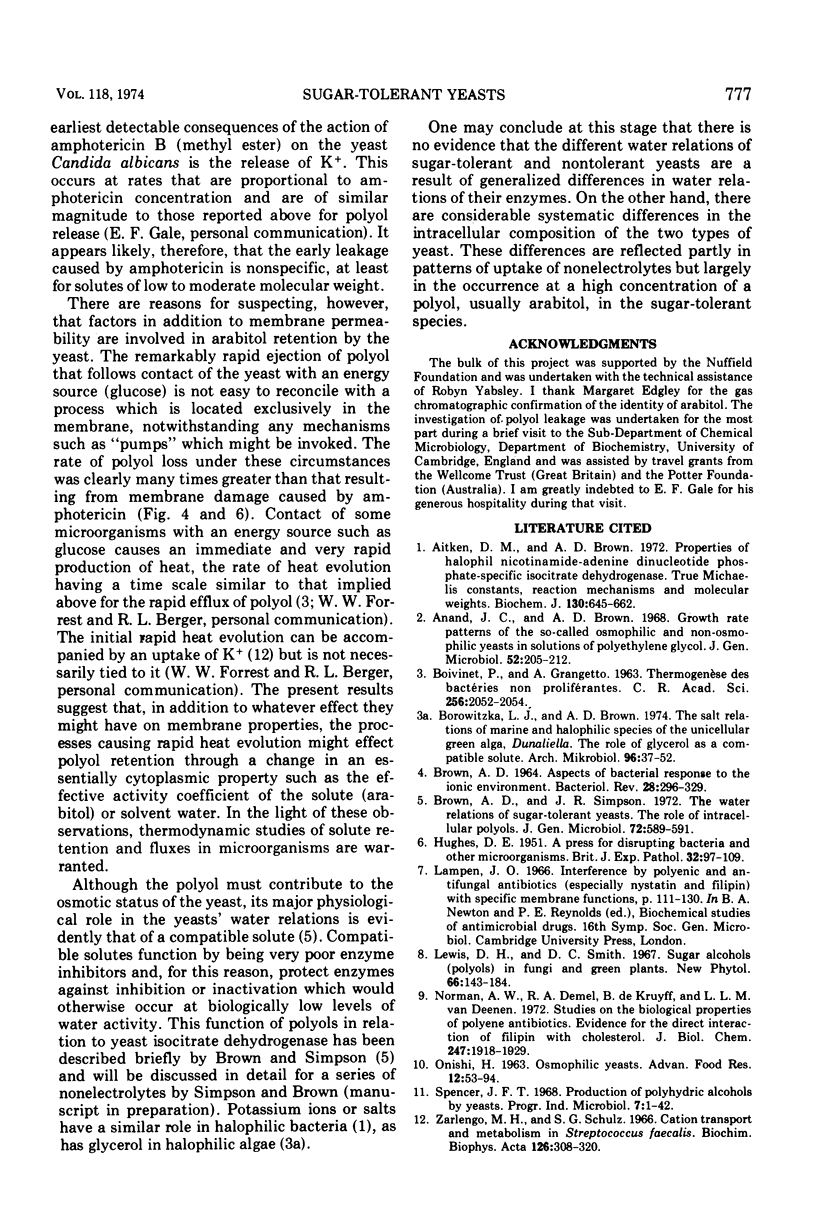
Selected References
These references are in PubMed. This may not be the complete list of references from this article.
- Aitken D. M., Brown A. D. Properties of halophil nicotinamide-adenine dinucleotide phosphate-specific isocitrate dehydrogenase. True Michaelis constants, reaction mechanisms and molecular weights. Biochem J. 1972 Dec;130(3):645–662. doi: 10.1042/bj1300645. [DOI] [PMC free article] [PubMed] [Google Scholar]
- BOIVINET P., GRANGETTO A. [Thermogenesis of non-proliferating bacteria]. C R Hebd Seances Acad Sci. 1963 Feb 25;256:2052–2054. [PubMed] [Google Scholar]
- BROWN A. D. ASPECTS OF BACTERIAL RESPONSE TO THE IONIC ENVIRONMENT. Bacteriol Rev. 1964 Sep;28:296–329. doi: 10.1128/br.28.3.296-329.1964. [DOI] [PMC free article] [PubMed] [Google Scholar]
- Borowitzka L. J., Brown A. D. The salt relations of marine and halophilic species of the unicellular green alga, Dunaliella. The role of glycerol as a compatible solute. Arch Mikrobiol. 1974 Mar 1;96(1):37–52. doi: 10.1007/BF00590161. [DOI] [PubMed] [Google Scholar]
- Brown A. D., Simpson J. R. Water relations of sugar-tolerant yeasts: the role of intracellular polyols. J Gen Microbiol. 1972 Oct;72(3):589–591. doi: 10.1099/00221287-72-3-589. [DOI] [PubMed] [Google Scholar]
- HUGHES D. E. A press for disrupting bacteria and other micro-organisms. Br J Exp Pathol. 1951 Apr;32(2):97–109. [PMC free article] [PubMed] [Google Scholar]
- Norman A. W., Demel R. A., de Kruyff B., van Deenen L. L. Studies on the biological properties of polyene antibiotics. Evidence for the direct interaction of filipin with cholesterol. J Biol Chem. 1972 Mar 25;247(6):1918–1929. [PubMed] [Google Scholar]
- ONISHI H. OSMOPHILIC YEASTS. Adv Food Res. 1963;12:53–94. [PubMed] [Google Scholar]
- Spencer J. F. Production of polyhydric alcohols by yeasts. Prog Ind Microbiol. 1968;7:1–42. [PubMed] [Google Scholar]
- Zarlengo M. H., Schultz S. G. Cation transport and metabolism in Streptococcus fecalis. Biochim Biophys Acta. 1966 Oct 10;126(2):308–320. doi: 10.1016/0926-6585(66)90068-9. [DOI] [PubMed] [Google Scholar]


